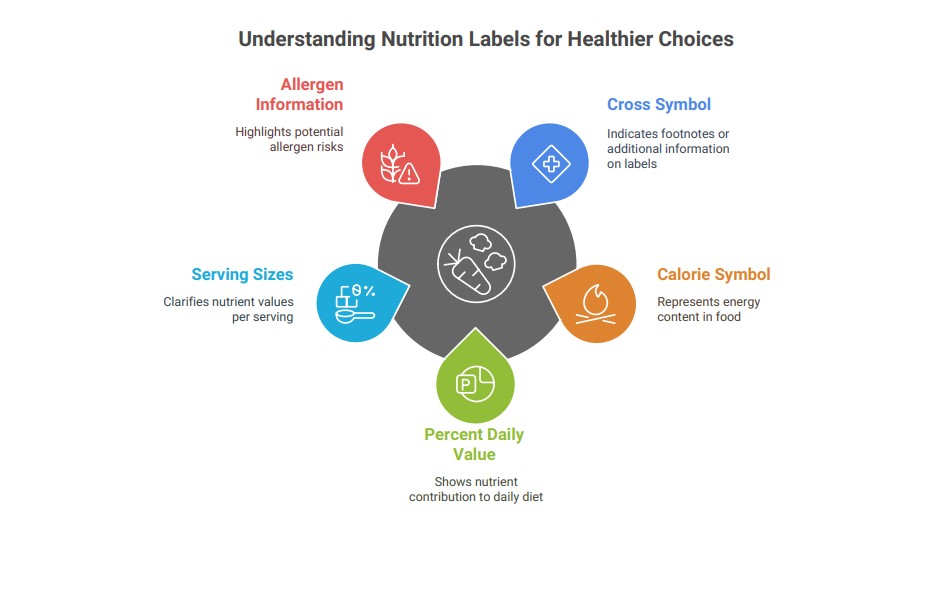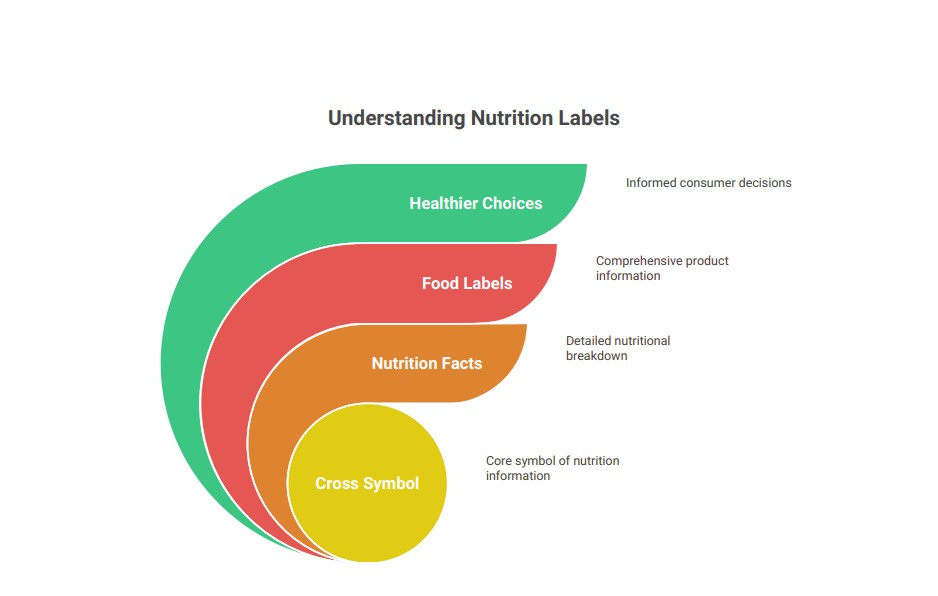
When reading nutrition labels, you may have noticed a small cross symbol (†) or wondered about certain terms and symbols related to nutritional information. This symbol, along with other elements on food and drink labels, can be confusing. In this article, we’ll dive into the meaning of the cross in nutrition facts, clarify related questions, and explain how it ties into understanding food labels for healthier choices. Whether you’re a health-conscious consumer or just curious, this guide will provide clear, actionable insights.
What Does the Cross in Nutrition Facts Mean?
The cross symbol (†) on a nutrition facts label typically indicates a footnote or additional information that applies to specific nutrients or claims on the label. This symbol is used to draw attention to details that couldn’t fit directly in the main Nutrition Facts panel, ensuring consumers have the full context. For example, it might clarify how a nutrient’s value was calculated or provide disclaimers about dietary recommendations.
For instance, if a product lists “0g trans fat,” a cross might point to a footnote stating, “Not a significant source of trans fat.” This ensures transparency, as trace amounts may still be present but are below the threshold for labeling. The cross helps manufacturers comply with FDA regulations, which require clear communication of nutritional content.
Understanding this symbol is key to interpreting labels accurately. It’s not just a random mark—it’s a guide to deeper information that can impact your dietary choices.
What Is the Symbol for a Nutritional Calorie?
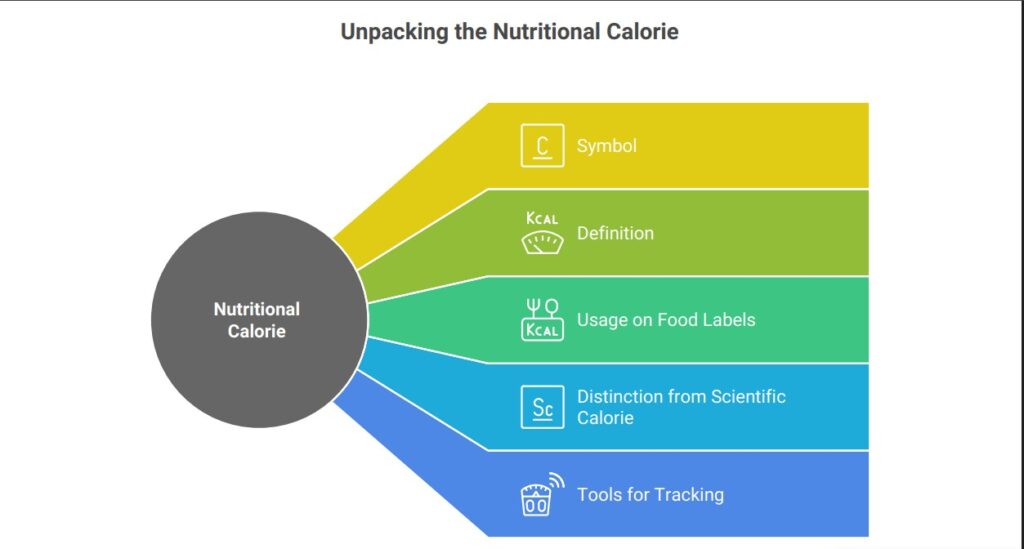
The symbol for a nutritional calorie is “Cal” (with a capital “C”). In nutrition, a calorie refers to a kilocalorie, which is the amount of energy required to raise the temperature of one kilogram of water by one degree Celsius. On food labels, calories are listed prominently, often without the “Cal” symbol, as it’s assumed to be understood.
For example, a nutrition label might state “200 calories per serving,” meaning 200 kilocalories. This distinguishes it from the scientific “calorie” (lowercase “c”), which is 1/1000th of a kilocalorie. Knowing this distinction helps avoid confusion when tracking energy intake. Tools like this calorie tracker can help you monitor your daily calorie consumption with precision.
What Does the Cross Really Stand For?
The cross (†), often called a “dagger,” is a typographical symbol used in various contexts, including nutrition labels. In the Nutrition Facts panel, it specifically serves as a reference marker. It doesn’t have a universal meaning like a letter or number but acts as a pointer to additional information, such as footnotes or disclaimers.
For example, a label might use the cross to indicate that a nutrient’s value is based on a specific serving size or that certain claims (e.g., “low sodium”) are subject to conditions outlined in the footnote. This ensures consumers aren’t misled by simplified numbers. The dagger’s role is purely functional, guiding you to details that enhance label transparency.
Percent Daily Value (%DV) of a Nutrient
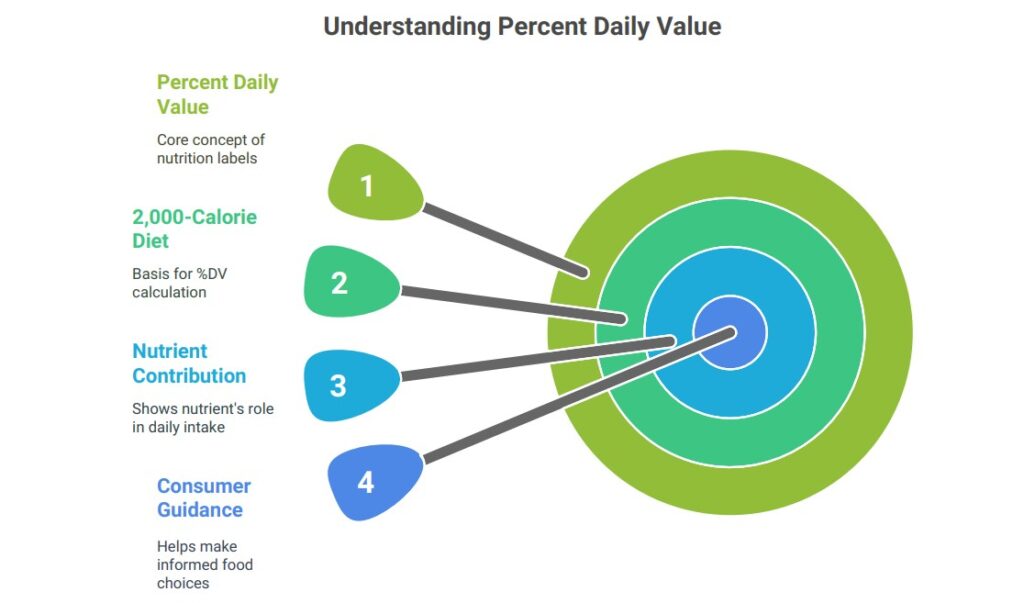
The Percent Daily Value (%DV) is a key component of nutrition labels, showing how much a nutrient in a serving contributes to a daily diet, based on a 2,000-calorie daily intake. It’s expressed as a percentage and helps consumers gauge whether a food is high or low in a particular nutrient.
For example:
- A %DV of 5% or less is considered low.
- A %DV of 20% or more is considered high.
If a product has 10g of fat per serving and the %DV is 15%, it means that serving provides 15% of the recommended daily fat intake. The cross symbol might appear next to %DV to clarify assumptions, such as “Based on a 2,000-calorie diet” or “Values may vary based on individual needs.”
Understanding %DV helps you make informed choices. For instance, if you’re watching sodium intake, a product with a 25% DV for sodium might prompt you to opt for a lower-sodium alternative. Tools like this nutrition tracker can simplify tracking %DV across meals.
What Does the Cross on Food Labels Mean?
On food labels, the cross (†) serves the same purpose as in the Nutrition Facts panel: it points to a footnote or additional context. For example, a packaged snack might list “10g protein” with a cross, leading to a note like, “Protein content may vary slightly due to natural ingredients.” This ensures consumers understand potential variations or specific claims.
The cross might also clarify allergen information, such as “Processed in a facility that handles nuts,” even if the product itself is nut-free. This is critical for those with dietary restrictions. By paying attention to the cross, you can avoid misinterpreting nutritional claims and make safer choices.
What Does the Cross on Drinks Labels Mean?
For beverages, the cross symbol functions similarly, referencing footnotes that clarify nutritional or regulatory details. On a drink label, it might point to information about added sugars, artificial sweeteners, or caffeine content. For example, a soda might list “0g sugar” with a cross, noting, “Contains artificial sweeteners.”
In some cases, the cross on drink labels addresses serving size discrepancies. A bottle might contain multiple servings, and the cross could clarify that the listed nutrients apply to one serving, not the entire container. This is especially important for high-calorie or high-sugar drinks, where consuming the whole bottle could significantly impact your intake.
Using a tool like this beverage nutrition tracker can help you log and analyze the nutritional content of drinks, ensuring you stay within your dietary goals.
What Does the Cross Mean in Health?
In the broader context of health, the cross symbol doesn’t have a specific nutritional meaning outside of labeling. However, it’s worth noting that the cross (especially a red cross) is often associated with medical or emergency services, like the Red Cross organization. On nutrition labels, though, its role is strictly informational, guiding consumers to footnotes that enhance understanding of dietary impacts.
From a health perspective, the cross’s importance lies in its ability to prevent misinterpretation. For example, a product claiming “low fat” with a cross might note that it’s high in sodium, which could affect heart health. By following the cross to its footnote, you gain a fuller picture of how a food or drink fits into a balanced diet.
Why Understanding the Cross Matters
The cross symbol, though small, plays a big role in making nutrition labels transparent. It ensures you’re not just seeing numbers but understanding the context behind them. This is crucial for:
- Dietary planning: Knowing the full story behind nutrients helps you align food choices with health goals, like managing weight or reducing sodium.
- Allergen awareness: Footnotes linked by the cross can highlight potential allergen risks.
- Regulatory compliance: The cross ensures manufacturers meet FDA or other regulatory standards, giving you confidence in label accuracy.
To make the most of this information, consider using tools like this nutrition app, which can help you track nutrients, interpret %DV, and stay informed about what’s in your food and drinks.
Practical Tips for Reading Nutrition Labels
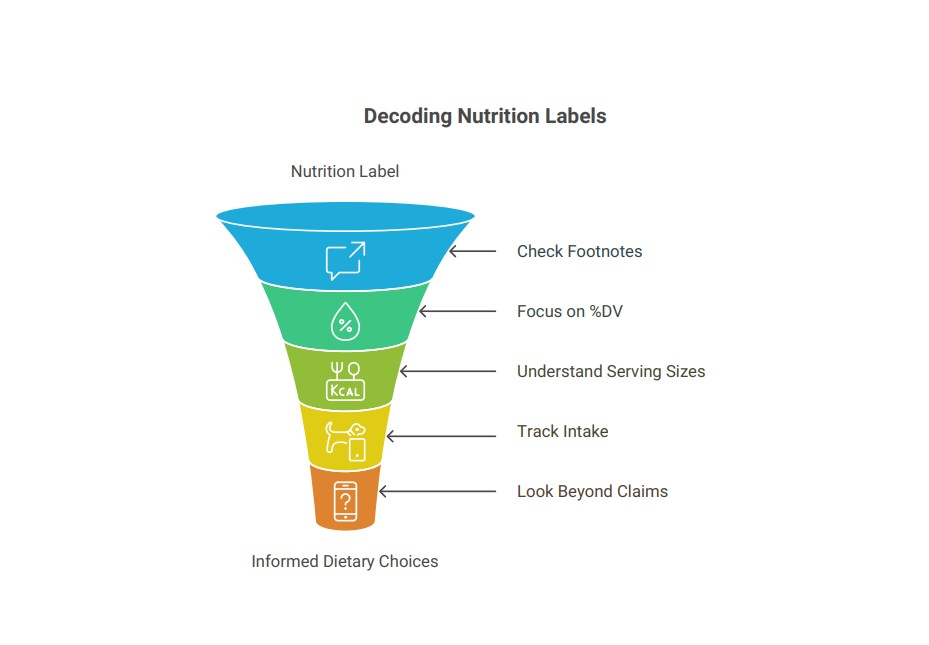
Here are some actionable steps to use the cross symbol and nutrition facts effectively:
- Always check footnotes: When you see a cross, find the corresponding note at the bottom of the label. It might reveal critical details about serving sizes or nutrient claims.
- Focus on %DV: Use the %DV to quickly assess if a food is high or low in nutrients like fat, sugar, or fiber. Aim for low %DV for saturated fat and sodium, and higher %DV for fiber and vitamins.
- Understand serving sizes: The cross might clarify that nutrient values are per serving, not per package. This is especially important for multi-serving items like drinks or snacks.
- Track your intake: Apps like this one can log your daily nutrient intake, making it easier to stay within recommended limits.
- Look beyond claims: Marketing terms like “low fat” or “sugar-free” might have a cross leading to disclaimers that change their meaning.
Common Misconceptions About the Cross
Some people mistake the cross for a warning symbol or think it indicates something negative about the product. In reality, it’s neutral—just a tool for clarity. Another misconception is that the cross is only about allergens, but it can apply to any nutrient or claim needing further explanation.
By understanding the cross’s true purpose, you can avoid confusion and make better-informed choices. It’s not about fear; it’s about empowerment through knowledge.
Conclusion
The cross (†) on nutrition facts labels is a small but powerful tool for understanding what you’re eating and drinking. By pointing to footnotes, it provides context for nutrient claims, serving sizes, and dietary considerations. Whether you’re deciphering calories, %DV, or allergen risks, the cross ensures you have the full picture.
To take control of your nutrition, pay attention to this symbol and use tools like this nutrition tracker to streamline your dietary planning. With this knowledge, you can confidently navigate food and drink labels, making choices that align with your health goals.
